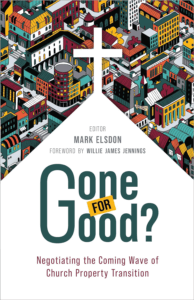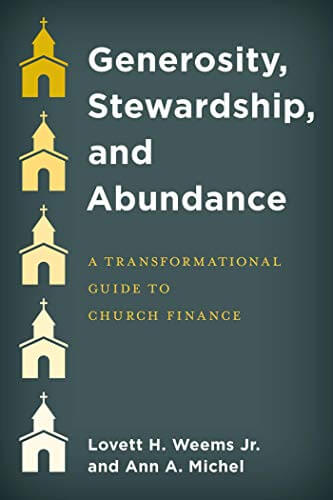David Bowers draws key lessons from the biblical story of Nehemiah to guide churches that are redeveloping their buildings or property to serve community needs. He says that such development is difficult, but doable, when approached with the correct spiritual and practical perspectives.
Many houses of worship have underutilized land and air rights. Those resources can often be activated for community benefit via the development of affordable housing or community facilities. Development can be difficult. Development is also doable. Here are nine lessons from the book of Nehemiah that can inform community development efforts undertaken by houses of worship.
1. Be bothered and compelled by the need.
If houses of worship want to get engaged in community development, it helps if they are bothered by the needs of people in their community. We must give a damn. Nehemiah was bothered by the struggles of his people. While serving as the king’s cupbearer, Nehemiah inquired about the well-being of his fellow Jews living in Jerusalem. He received word that their condition was tenuous. He broke down and wept and shared with the king the source of his sadness.
Today, many congregations exist in areas with people living in “great distress and reproach” — much as Nehemiah’s kin were living. Many houses of worship exist in a sea of need where members of the congregation or the larger community, or both, are living in distress, facing toxic choices while wrestling with issues including access to affordable housing, childcare, health care, and healthy food.
2. Pray.
It may seem obvious, but when confronted with a challenge, people of faith should pray. When Nehemiah is brought to tears upon the hearing of this distressed state of his people, he immediately prays, fasts, and makes confession for his sins and those of his people. Nehemiah asks for forgiveness, and for God to remember God’s commands and promises to the people. Speaking to God should never be perfunctory for people of faith. When taking on the challenge of doing a ministry of community development, a congregation should ground its response in intentional, open dialogue with God.
3. Be moved, not just touched.
The world needs more people moved to action, not just people that are touched. When confronted with human needs, it is easy for people to simply be touched. “Oh, what a shame, look at that homeless person lying on the street. So sad.” Nehemiah could have easily taken this position. He was 800 miles away working for the king. Instead, he heard of the need and was moved to action. “Send me.”
4. Government support is okay.
Nehemiah received government assistance for the building project. He was given papers that allowed for his safe passage and an earmark of critical timber. Some modern congregations are understandably weary of working with the government. Some have hesitation because of government bureaucracy. Some have distrust based on instances of historic government disinvestment in certain communities. But government assistance is not only okay — often it is essential. Government resources are our resources. Look for ways your project may be in line with local government policies.

Church leaders have always looked to scripture for wisdom on how to fulfill their callings. The Lewis Center’s Leading Like Nehemiah: Rebuilding Together resources lift up key themes in Nehemiah’s witness that can inspire and guide faith leaders today.
-
- Self-paced online course from Wesley Pathways for Ministry — $15
- Video-based adult Christian study for small groups — $45
- E-Book — $5.99
- Leading Ideas Talks podcast episode and in-depth interview
5. Survey the need.
While Nehemiah sensed the need, before embarking upon the work, he surveyed the wall. Today this equates to the fundamental need for a market study/feasibility analysis. While congregational leaders may have had a vision, it is important to hire professional help that can do a formal study to determine community needs and demands. Having a professional do an analysis of what is needed in the neighborhood and surrounding region, as well as what is already planned and approved for development, will help ensure that a project is meeting actual demand.
6. Cast the vision and get the people engaged to build.
Instructive is the role of the leader of the congregation to cast a bold vision and get congregational buy-in. Nehemiah starts by speaking to the need — “distress” the people are experiencing. He challenges the notion that the people must continue to live in such a manner — “that we may no longer be a reproach.” It would have been easy for Nehemiah to say, “look at the distress you are in … you need to get to work.” Instead, he makes the connection with his fellow Jews and makes it a “we” proposition. Modern-day houses of worship are well served when their leaders cast a vision for a better reality for the “we” that includes parishioners and those in the surrounding community. There should be a process by which the leadership engages members of the congregation in a manner that secures buy-in and helps people set their hand to what they believe is indeed “this good work.”
7. Utilize a public/private partnership.
Nehemiah 3 records an ancient reflection of what is often called today a “public/private partnership.” It is a beautiful scene of people with various talents working on the building project. The king made an earmark of government resources. The first verse of the chapter notes that the chief priest and “his brethren” were involved. The chapter ends with a reference to goldsmiths and merchants. Simply put, the rebuilding project Nehemiah spearheaded involved government, the temple/religious folks, and the business community. This is a model for what is needed today.
8. There will be naysayers.
Development can be difficult. Development is also doable. Part of that difficulty will come from naysayers. Opposition may come from members of the congregation or the denomination. Some may come from people in the community you are trying to help. From people who look nothing like you, or from people who look just like you. From folks who benefit from the disfunction and despair of the people, or from folks you think would be with you. When opposition comes, having a spiritual grounding and covering is foundational. Having a strong team of public private-sector partners, as well as congregation and community support, will help when your naysayers are looking for avenues to exploit to undermine your work.
9. Remember whom you are working for.
I have heard many inspiring stories from faith leaders about how congregations persevered in the face of naysayers, delay, opposition, heartache, surprises, and frustrations. The responses echo the essence of what is noted in Nehemiah 4. Leadership is strategic when it places people in the work, and it reminds people to remember the divine source of their strength and calling. Nehemiah encourages the people to remember God. The people are told to fight for their families. For the people. To serve God through service to the people. That is what people of faith are called to do. Seek the well-being of the people.
 Excerpted from Gone for Good? Negotiating the Coming Wave of Church Property Transition edited by Mark Elsdon ©2024 (Wm. B. Eerdmans Publishing Co.). Reprinted by permission of the publisher. The book is available through the publisher, Cokesbury, and Amazon.
Excerpted from Gone for Good? Negotiating the Coming Wave of Church Property Transition edited by Mark Elsdon ©2024 (Wm. B. Eerdmans Publishing Co.). Reprinted by permission of the publisher. The book is available through the publisher, Cokesbury, and Amazon.
Related Resources
- Leading Like Nehemiah: Rebuilding Together, available both as an online course from Wesley Pathways for Ministry ($15) and a video-based adult Christian study for small groups ($45)
- 10 Leadership Lessons from Nehemiah by Lovett H. Weems Jr.
- Negotiating the Coming Wave of Church Property Transitions featuring Mark Elsdon — Leading Ideas Talks podcast episode | Podcast video | In-depth interview
- Ways Your Building Can Generate Income and Bless Your Community by Mark DeYmaz
Image by freepik







